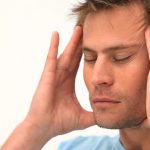What’s the Best Way to Ease Opiate Withdrawals?
Everyone has encountered the popular culture opiate withdrawal. Some people have read about it in books, some have watched characters on TV go through it, others have seen it in films, etc. The narrative remains the same. The person experiencing withdrawal is pale and sweaty and they must be chained near a toilet for a few days and they come out the other side feeling better. The stories tell us that this is a horrible experience, so we all know that opiate withdrawal is unpleasant. But, in reality, it’s even more unpleasant than people imagine.
When you are ready to stop using opiates, your best choice is to seek out a professional, qualified opiate addiction treatment center with a staff of experts trained and experienced in supporting p-patients during this difficult time. Every program will begin with detoxification and this will be your time to weather withdrawals. You can rest assured that the employees of the rehab will work to alleviate your discomfort and to support you throughout the process.
The following will cover the methods used in a professional drug addiction treatment setting to ease your opiate withdrawals. But, you probably have even more questions that you would like answered. Our experts are just waiting for you to call 888-602-1971(Who Answers?) so they can tell you everything you want to know. They are prepared to talk to you about what happens in treatment, financing treatment, and treatment centers that seem right for your needs.
For What Should I Be Prepared?
According to the Substance Abuse and Mental Health Services Administration, opiate withdrawals are not medically dangerous, though they can be “highly unpleasant and produce intense discomfort.” The symptoms and the onset of opiate withdrawal symptoms, as well as the severity and duration, depends upon:
- The opiate being used
- The daily dose
- The interval between doses
This is why heroin withdrawal symptoms begin between eight and 12 hours after the final dose, but methadone withdrawals don’t kick in for 36-48 hours.
Typical withdrawal symptoms include:

Insomnia and nausea are common opiate withdrawal symptoms.
- Goosebumps
- Quickened pulse
- Abnormally heightened reflexes
- High body temperature
- High blood pressure
- Sweating
- Enlarged pupils
- Runny nose
- Yawning
- Tearing
- Insomnia
- Increased rate of respiration
- Nausea and vomiting
- Abdominal cramps
- Muscle and bone pain
- Anxiety
- Diarrhea
How Do Clinicians Decide How Severe My Withdrawal Is?
The treatment plan for your opiate withdrawal will be dictated by the severity of your symptoms. Most medical detox programs use the Clinical Opiate Withdrawal Scale, or COWS. Its results help professionals to determine the severity, as well as the stage and the level of physical dependence on opiates.
Patients and clinicians work together to determine gauge the following:
- Resting pulse rate
- GI upset over the prior ½ hour
- Sweating over the prior ½ hour
- Tremor of outstretched hands
- Restlessness
- Yawning
- Pupil size
- Irritability or anxiety
- Joint or bone aches
- Gooseflesh skin
- Tearing or runny nose
Most symptoms are scored on a range from “not present” to “severe.” Some are determined by reports from the patient and others are the result of observation during the assessment. The total score is used to measure the severity:
- Mild
- Moderate
- Moderately severe
- Severe
The level of severity allows clinicians to accurately treat you.
How Will a Rehab Staff Ease My Opiate Withdrawals?
Firstly, a professional guide to detox produced by the Substance Abuse and Mental Health Services Administration makes clear that management “without medications can produce needless suffering in a population that tends to have limited tolerance for physical pain.” Even mild levels of opiate use can produce some pretty painful withdrawal symptoms.
Medications will certainly be used during a professional detox. The most commonly used are:
- Methadone: reduces withdrawal symptoms and lessens cravings
- Buprenorphine: prevents withdrawal and reduces cravings
- Clonidine: reduces muscle aches, anxiety, runny nose, sweating, agitation, and cramping, but does not curb cravings
- Naltrexone: helps prevent relapse
Despite the high degree of efficacy associated with these medications, patients may still have symptoms unaddressed. For this reason, people are often given adjunctive medications as well. For example, muscle aches, headaches, and bone pain may be treated with acetaminophen, ibuprofen, or aspirin. People with stomach upset may be given Maalox or Pepto-Bismol.
To learn more about the ways that a drug addiction treatment program will ease your opiate withdrawal symptoms, call 888-602-1971(Who Answers?). Get all the information you want as soon as you want it. There is no reason to wait.




